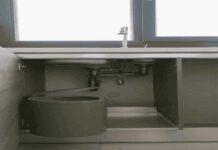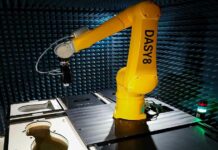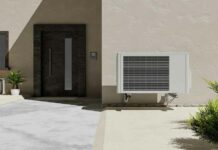A switchboard is a critical component of an electrical distribution system that routes electricity to where it needs to go. From large-scale switchboards that manage entire buildings to smaller switchboards in residential homes, these devices act as a central hub that connects various circuits and ensures electricity flows properly throughout a structure.
What is the Purpose of a Switchboard?
A switchboard serves several key functions:
Power Routing
The core purpose of a switchboard is to route electricity to different locations in a building. Cables and wires run from the utility power lines and enter the switchboard. Then, separate circuits branch out from the switchboard to supply power wherever needed – lighting, outlets, appliances, machinery, etc. The switchboard is a central junction to divvy up and dispatch electrical power.
Circuit Protection
In addition to routing electricity, switchboards contain protective devices like circuit breakers that guard against overloads. If too much current flows through a wire, the circuit breaker will trip and cut power to prevent fires or damage. The switchboard offers a centralized location for these key safety devices.
Monitoring and Control
Modern smart switchboards have features that allow for monitoring and control capabilities. Data like voltage levels, amperage, and power consumption can be tracked. Many switchboards also allow for remote control of equipment. For example, lighting systems can be turned on/off from a central location or schedule. These intelligent reporting and command functions are increasingly built into switchboards.
The Different Components of a Switchboard
Switchboards contain a variety of equipment that facilitates the management and distribution of electricity:
Enclosure
The outer switchboard enclosure is typically made of heavy-gauge metal to protect inner components. It may also have ventilation slots, fans, or air conditioning to prevent overheating. The enclosure will have a swinging front panel that can be opened to access equipment while blocking access during normal operation.
Bus Bars
Thick strips of copper or aluminum called “bus bars” act like highways to carry large amounts of electrical current through the switchboard. Insulated bus bars will have phases A, B, and C. This allows for proper voltage and load balancing across circuits.
Breakers and Fuses
Protective devices like fuses and circuit breakers are installed to guard feeders and individual branch circuits against overcurrent. Hydraulic-magnetic breakers are common in commercial switchboards, while fuses are more typical in light industrial applications. If the current exceeds safe levels, these devices will trip or blow, cutting power to that circuit.
Control Power Transformer
This transformer steps the voltage from the main lines to supply control power for switchgear operation at 120V or 240V. This allows switchboard components to derive lower voltage power from the high-voltage feeders.
Voltmeters and Ammeters
To monitor performance, switchboards can be outfitted with voltmeters to measure voltage and ammeters to measure electrical current. Analog gauges or digital displays show real-time readings that technicians can review.
Ground Bus
The ground bus bar provides a solid connection to the earth and is a safe path for fault currents or electrical discharges. This crucial grounded reference point stabilizes voltage and guards against short circuits. All equipment ground wires should terminate here.
Different Types of Switchboards
There are different classifications of switchboards depending on the applications and voltages they manage:
Low Voltage Switchboard
In commercial and residential settings, low-voltage switchboards operate feeders and circuits of 120 to 600V, powering lighting, receptacles, appliances, machinery, and more. This would be common for routing power in an office building, apartment complex, or manufacturing facility.
Medium Voltage Switchboard
For very large facilities, campuses, or high-capacity industrial activity, medium voltage switchboards operating 1kV to 35kV feeders may be used as they can handle huge loads. This scale would be required for major manufacturing plants, mills, infrastructure utilities, or data centers.
Emergency Switchboards
Critical operation facilities like hospitals and data centers will have emergency switchboards that can route power from backup generators and UPS battery systems to keep electricity flowing to essential loads if utility feeds are interrupted.
Where are the Switchboards Located?
The location of electrical switchboards can vary:
- In commercial buildings, switchboards are typically located in a centralized electrical room so feeders can economically reach all areas.
- Industrial facilities with specialized high-voltage infrastructure may be installed adjacent to substations or generators in dedicated electrical yards.
- In residences, a single main service panel performs the switchboard duties and is located based on a utility service entry point – often a garage, basement, or closet.
No matter where positioned, the switchboard serves as the beating heart of an electrical system, receiving power inputs and dispatching electricity through all necessary arteries and branches of a building. Proper maintenance and operation ensure uninterrupted power.
If switchboards or other electrical infrastructure issues arise, consult qualified professionals.
How are Switchboards Maintained and Repaired?
Proper maintenance and repair are essential, With switchboards acting as critical hubs in electrical distribution systems. Only qualified electricians should service switchboards due to hazardous high-voltage exposure. To avoid disruptions, routine maintenance and remediation of faults or failures should be performed.
Inspections
Periodic inspection by a qualified electrician checks for signs of wear, damage, or hazards. Thermographic scans can identify hot spots while testing confirms grounding, gauges circuit load levels, etc. Preventative maintenance ensures optimum performance.
Breaker Testing
Maintenance requires systematically testing breakers and protective relays. Breakers are tripped manually, and then timing and operation are confirmed visually and with a multimeter. Relays are similarly tested. Faulty equipment gets replaced immediately.
Cleaning
Debris-like dust buildup can cause insulation problems or component failures. Maintenance clearing debris improves heat dissipation. Vacuums suck dust while specialized wiping clothes clean grease buildup.
Tightening
Vibration can loosen electrical connections, so maintenance procedures ensure all nuts, bolts, and lugs are properly torqued down based on size and materials. Proper tightness prevents warning signs like heat discoloration.
Upgrades
For outdated switchboards, upgrades modernize capabilities. Analog gauges transition to smart digital monitors while electromechanical breakers convert fully electronic. Smart switchboards gain advanced features.
Emergency Repairs
If failures occur, qualified electricians troubleshoot issues to restore functionality rapidly. Components get inspected and tested to identify faults. Damaged equipment then gets quickly replaced, and operations resume.
Testing & Certification
Once maintenance or repairs conclude, the switchboard gets thoroughly tested end-to-end. Electricians confirm proper instrumentation readings, breaker timing, evidence of overheating, etc., to verify full function. Strict standards and codes apply for certification.
Routine maintenance combined with prompt issue resolution ensures ongoing switchboard integrity. Support from electrical contracting specialists can ensure critical switchboards operate safely. Their experts follow best practice procedures while leveraging digital tools to provide proactive insights before problems arise. Investing in switchboard care sustains essential capability.
In summary, a switchboard forms the core of an electrical distribution system – routing power safely to facility loads. These complex assemblies utilize smart monitoring tools but require knowledgeable electricians for comprehensive maintenance and urgent repair when problems emerge. Particularly for switchboards underpinning mission-critical enterprises, expert electrical contractors offer essential upkeep and emergency response to keep the lights on.




























